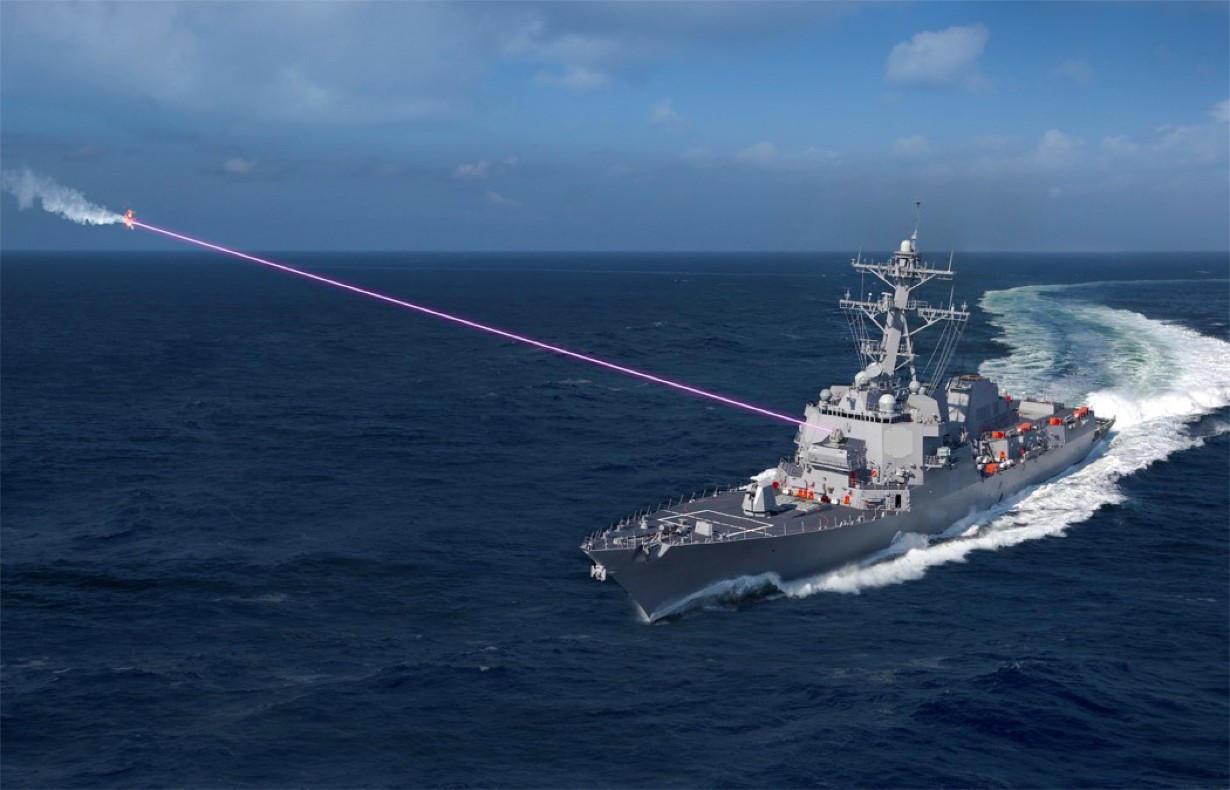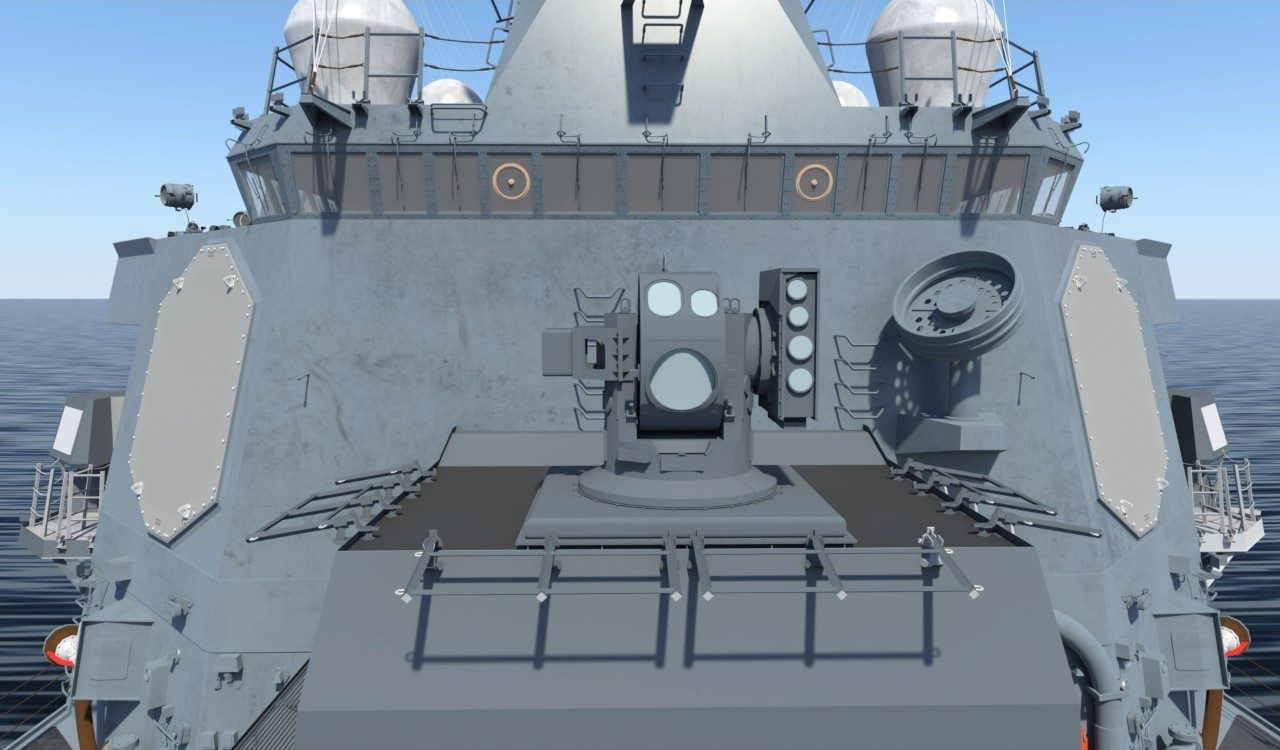On December 5, US Navy ships employed lasers against an Iranian Navy vessel that attempted to blind US Navy ships in the Strait of Hormuz temporarily.
In a statement, the US Navy revealed that an Iranian patrol boat belonging to the Islamic Revolutionary Guard Corps (IRGC) undertook “unsafe and unprofessional” action by sailing into the route of two US Navy ships transiting the Strait of Hormuz on Monday.
“The Iranian vessel attempted to blind the bridge by shining a spotlight and crossed within 150 yards of the US ships – dangerously close, particularly at night,” US Central Command said.
The incident involved the guided-missile destroyer USS The Sullivans and the expeditionary sea base platform ship USS Lewis B. Puller. The US Navy used auditory warnings and non-lethal lasers to de-escalate the situation, and US Navy ships resumed their voyage without incident.
The US Navy said that the IRGC [Navy’s] conduct violated international norms for ethical and secure maritime behavior, which raised the possibility of miscalculation and collision.
CENTCOM spokesman Col. Joe Buccino said that this dangerous action in international waters typifies Iran’s destabilizing actions across the Middle East.

The confrontation on Monday was the latest between US and Iranian naval forces in Gulf waters. It comes after the USS Lewis B Puller seized 50 tons of ammunition and rocket propellant on board a fishing vessel destined for Yemen in the Gulf of Oman last week.
The Puller’s personnel discovered approximately 1 million rounds of 7.62mm small arms ammunition, 25,000 rounds of 12.7mm heavy machine gun ammo, 7,000 proximity fuses for rockets, and over 2,100 kilograms (4,630 lb) of fuel needed to launch shoulder-fired anti-tank rocket-propelled grenades (RPGs).
Meanwhile, the United States has strongly condemned Iran’s crackdown on massive protests against the regime and its morality police. In contrast, Iran’s Supreme Leader has blamed the unrest on the United States.
The IRGC warships have occasionally made attempts to intercept or harass US Navy and Coast Guard vessels that are operating in the area. The US ships have previously fired warning shots at the IRGC vessels in response to such occurrences.
Recently, a US nuclear-powered ballistic missile submarine docked at Diego Garcia Island in the Indian Ocean. Although the docking at Diego Garcia took place in late October, disclosing a ballistic missile submarine’s operations—typically classified—sent a strong signal to US regional rivals.

US Navy Developing Powerful Laser Weapons
The US Navy has been working on numerous projects to outfit warships with laser weapons that may disrupt or destroy hostile systems. The service makes significant technological investments, with millions set aside for multiple prototypes in the coming years.
The High-Energy Laser with Integrated Optical Dazzler and Surveillance, or HELIOS, is one of the key laser weapon systems created for the US Navy and is made by Lockheed Martin.
In August, Lockheed Martin supplied a high-energy laser weapon known as “HELIOS” to the US Navy. The weapon was given to the US Navy for installation on warships, and its delivery symbolized a significant advancement in Pentagon technology beyond limited testing and toward actual warfare.
The weapon system is a 60+ kW-class laser and is officially known as the High Energy Laser with Integrated Optical-Dazzler and Surveillance (HELIOS). The contract to build the weapon was handed to Lockheed Martin in 2018.

The US Military said that HELIOS improves the performance of the ship’s overall combat system to fend off potential threats and provide more safety for sailors.
Previously, Rick Cordaro, vice president of Lockheed Martin’s advanced product solutions, said, “HELIOS represents a solid foundation for incremental delivery of robust and powerful laser weapon system capabilities.”
A continuous-wave HEL beam is a concentrated optical ray that causes a target’s surface to heat up and burn up. There is no momentum transfer, shock wave, high-velocity fragmentation, or instantaneous effects like there are with kinetic weapons.
The multi-mission HELIOS system, integrated and extendable by design, will provide tactically relevant laser weapon system warfighting capability as an essential part of layered defense architecture, according to the manufacturer.
The cutting-edge new weapon system HELIOS adds a layer of protection to the fleet with its deep magazine, low cost per kill, light-speed delivery, and quick response.
In January 2022, Lockheed Martin said that the HELIOS system was being prepared for installation on the Arleigh Burke-class destroyer USS Preble (DDG-88) this year. In the fall of 2021, the company completed testing at Wallops Island, Virginia.
- Contact the author at ashishmichel(at)gmail.com
- Follow EurAsian Times on Google News




